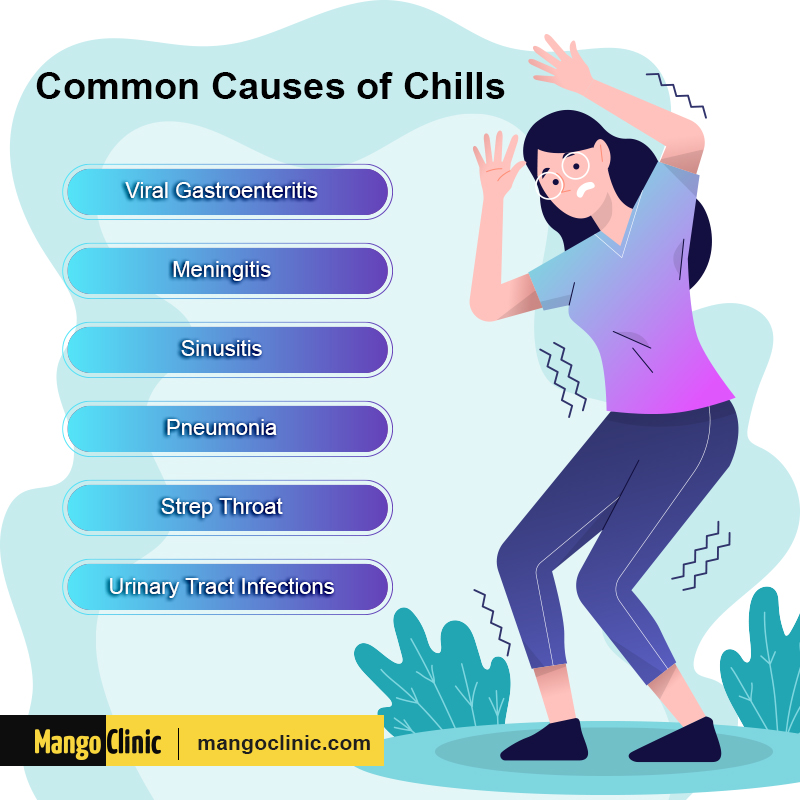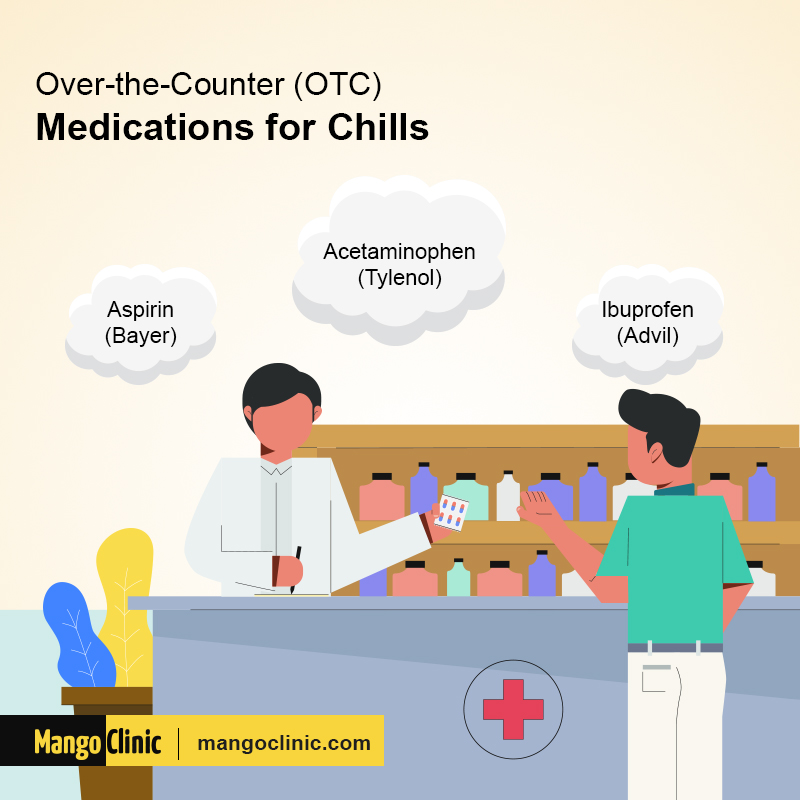How Are Anxiety Chills Different from the Normal Chills?

We all get chills at some point in our lives. Chills refer to that unexplainable sensation of feeling cold for no apparent reason. In fact, you can get chills and start shivering or develop goosebumps even when you are under wraps or you are wearing warm clothes.
Nonetheless, chills can occur because of fever or as a sign of a looming illness and it is your body’s response to the changes in temperature. You can also get chills without a fever if you are nervous, apprehensive, or anxious about an upcoming event or situation.
In most cases, chills do not last long but they can recur several times in a day depending on the main causes. Knowing the difference between anxiety chills and normal chills can help you decide when to ignore the phenomenon and when to see a doctor.
Looking for proper anxiety treatment? Click the button below to book your appointment.
Keep reading to find out more.
Table of Contents
Physical Symptoms of Anxiety
Anxiety is your body’s response to perceived threats that might appear normal to others. The condition is often characterized by intense and persistent fear, worry, or unease about ordinary situations.
Patients with an anxiety disorder may constantly and excessively worry about getting late to work, missing a flight, becoming sick, or even dying. Physical symptoms of anxiety include:
- Chills and cold sensations
- Shivering and trembling
- Shortness of breath
- Excessive sweating
- Excessive fatigue
- Muscle tension
- Dry mouth
- Irregular heartbeat
- Sleep problems
COVID and Anxiety Symptoms
As the world grapples with the effects of the COVID-19 pandemic, reports indicate that the number of people experiencing anxiety symptoms is on the rise. People are not only worried and concerned about their health, but also about the future.
It has also emerged that some of the symptoms of COVID are similar to anxiety symptoms. Common COVID and anxiety symptoms include:
- Dry mouth
- Dry cough
- Excessive fatigue
- Fever
- Chills and cold sensations
- Difficulty breathing
- Loss of smell and taste

Can Anxiety Make You Cold?
Anxiety can make you cold. Chills do not only come because of illness. They can also occur because of nervousness and anxiety.
When you are anxious, your body responds by hyperventilating, albeit temporarily, subsequently causing your heart to beat faster and your blood to flow irregularly. This often results in chills and cold sensations.
Causes of Anxiety Chills
Anxiety is similar to a fight or flight response that triggers the body to respond by raising internal temperature while the external temperature remains the same. The rapid change in body temperature will lead to sweating and cause chills when the sweat encounters cold external air.
Another cause of anxiety chills has to do with poor blood flow. As the body responds to the looming danger, blood will flow more to the organs that are essential for survival. This will result in cold sensations and sometimes, hot flashes.
Research also shows that people with anxiety disorder are more sensitive to cold weather. For this reason, temperature changes may trigger chills and cold sensations.
Are you suffering from anxiety? Click the button below to book your appointment.
Chills before Panic Attack
If you have General Anxiety Disorder, it is normal to feel chills before, during, and after a panic attack. These chills and cold sensations are simply your body’s way of preparing for the perceived looming danger.
Besides the chills, you may experience excess sweating, trembling, shortness of breath, rapid heart rate, and hot flashes before a panic attack.
Are Chills a Symptom of Panic Attacks?
Chills are a symptom of panic attacks. At the same time, a panic attack can trigger chills and cold sensations. As highlighted above, the reason why panic attacks are characterized by cold sensations has to do with the body’s response to poor blood circulation, hyperventilation, and rapid changes in temperature.
How Do Anxiety Chills Feel like?
Anxiety chills feel like any other normal cold sensation. The victim will feel cold and start shivering, trembling, and even develop goosebumps.
Sometimes, the patient may start sweating and fluctuate between chills and hot flashes as the sweat encounter cold external air.

Difference between Anxiety Chills and Normal Chills
The difference between anxiety chills and normal chills revolve around the causes. Anxiety chills come as a result of hyperventilation as the body responds to impending danger. They may also occur because of poor circulation and low blood sugar caused by the victim become nervous or anxious.
Normal chills may be a sign of a looming illness or fever, and they are not related to a person’s psychological emotions like nervousness, apprehension, and anxiety. Normal chills may also occur after intense physical exercise.
Safe Way to Stop Cold Chills
You can stop cold chills by:
- Drinking plenty of fluids
- Getting lots of rest and sleep
- Taking a cool shower
- Sponging the body with warm water
- Addressing anxiety symptoms by meditating or exercise
How to Manage the Physical Symptoms of Anxiety?
Anxiety is a chronic condition so the only way to treat it is by managing the symptoms. You can manage the physical symptoms of anxiety by:
- Practicing relaxation techniques like deep breathing
- Working out to relieve stress
- Indulging in your favorite hobbies
- Avoiding stressful situations
Looking for medicinal anxiety treatment? Click the button below to book your appointment.
Final Thoughts
If you need any help stopping cold chills and managing anxiety symptoms, do not hesitate to contact our health practitioners at Mango Clinic. Our medical team is always ready to attend to your queries and concerns.
Contact us at Mango Clinic for anxiety-chills treatment or click the banner below to book your appointment.





